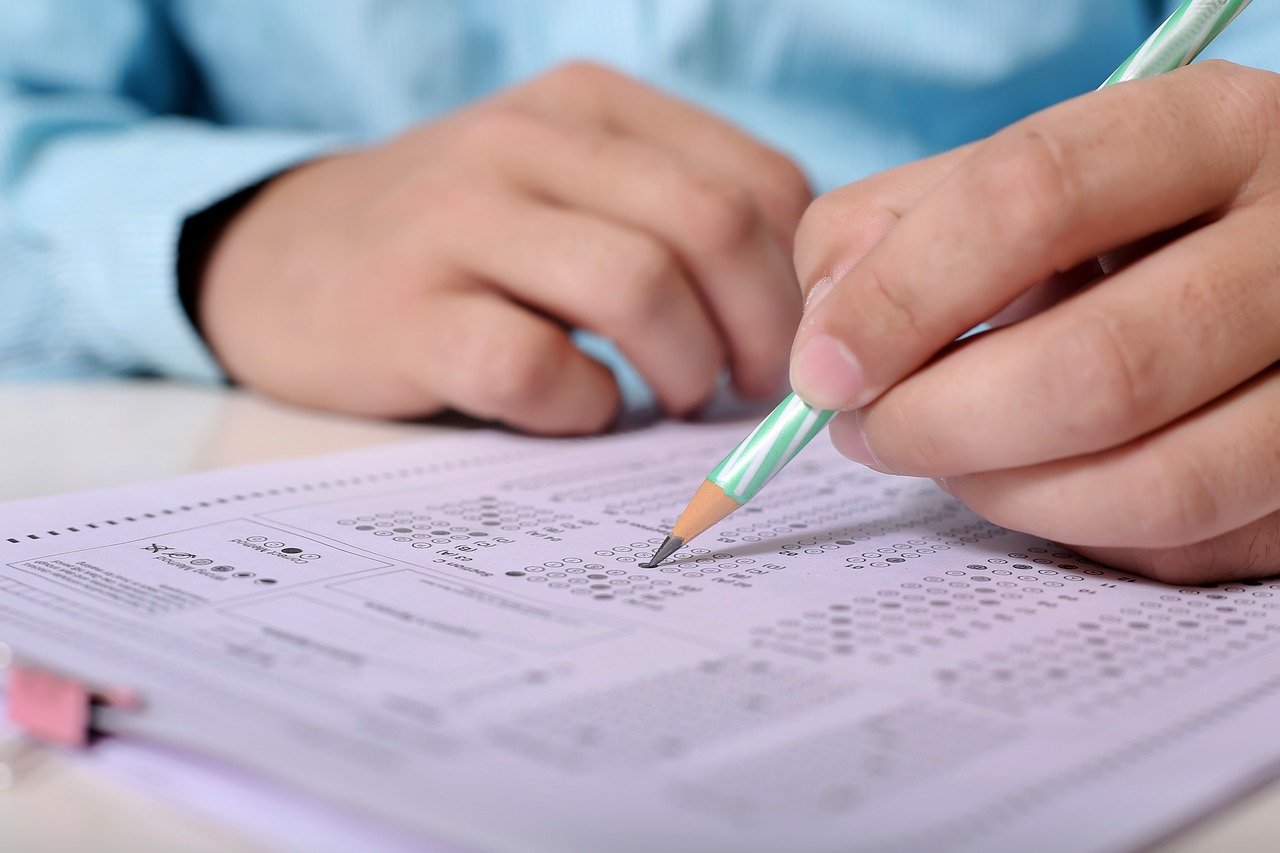
Can’t tell your summative assessment from your formative assessment? Never fear, our answers about summative and formative assessments are here!
What is summative assessment?
Summative assessment is an assessment done at the end of a specified period of time. It is to assess a learner’s understanding or attainment. Summative assessment may take the form of a formal test or exam, or it may be an essay or project piece of work. Summative assessment usually involves a ‘score’ or ‘grade’ and potentially a qualification. GCSEs and ‘A’ levels are examples of very final summative assessment. But many end of year, or even end of term, tests are also classed as summative assessment.
What is formative assessment?
Formative assessment takes many forms. It is part of a process of evaluating student understanding and adapting teaching to respond to this. Formative assessment can be very informal. It can be asking specific questions during a class, or observing a partner talk or taking a quick poll during a lesson. Formative assessment can be more formal, though. For example, interviewing a student to assess understanding, listening to them read, marking homework. The element which makes assessment formative is the part when the results are used. This may be to adapt teaching or make decisions regarding support for students.
Is feedback part of formative or summative assessment?
Feedback is a vital part of formative assessment, as well as the teacher adapting their teaching or lesson plans. They may pass on the feedback which allows the learner to adapt their approach. This may aim to encourage them to revise, to offer more support, or to remind them of learning. Summative assessment will often include feedback in the form of a result. It does not usually feed back into the teaching and learning cycle if it is a final exam.
Can summative assessment be used formatively?
Yes. Summative assessment often can be used to inform formative assessment practices. Teachers may use a gap analysis to see which questions the group, or an individual, did particularly well on or where there was a weakness. This will then be used to plan some lessons, or to plan an intervention for an individual or small group. Where summative assessment is used termly, or for the end of a unit/topic, it can improve teaching and learning. Where this happens, this can be called a formative assessment process as well as summative.
So when does summative assessment remain purely summative?
Assessment which results in a qualification are usually purely summative. Once the grade is given there is not the expectation that there will be feedback to immediately act upon. The teacher’s job is not usually finished with regard to that student. There may be some specific feedback which helps the learner to move forward or to retake the assessment, particularly where the result was not the desired outcome. However, this will not change the current result. Therefore, this is not part of a formative cycle for that particular assessment. An example of that may be where a child receives a grade 2 on their GCSE exam. They may wish to use feedback from that test result to inform future learning, but it will not change that result. It will help them to get a better result on a future exam, hopefully.
What is summative assessment in primary school?
For primary schools, the main statutory examples of summative assessment are the SATs, which are taken at the end of Key Stage 1 (Year 1) and Key Stage 2 (Year 6). The Times Tables test, in England, is also taken in Year 4. These would be classed as summative assessments in themselves, although they are not connected to qualifications for the child. The results of these tests can feed into national league tables. This helps the government to measure attainment across the country. It also gives information to parents and Ofsted about specific schools. Many primary schools will also use commercially available end of year tests. This is to pick up on key trends and address any weaknesses before they reach the statutory testing year.
Is there a purpose for tracking formative assessment data?
A teacher may be using formative assessment, in formal and informal ways, in the classroom. There can be many benefits to tracking elements of formative assessment data. This can give school leaders a good overview of the progress and attainment of pupils in the school. Using data analysis and pupil data trends among specific cohorts can be picked up. This may flag up a wide difference in the attainment of some groups. For example, those children who are summer born and those born in the autumn. This may show a need for more intervention to support those pupils which schools can then plan a budget for. This helps in the administration elements of teaching and learning across the school. There may be a class who are tracking lower than their peers in certain subjects. Allowing this group time to address this before they move to the next phase of their education.
For the teachers, a good analysis of their assessment data can feed into planning. When revisiting a topic, a teacher will be able to see who struggled with this topic last term and then plan accordingly for them. They may also use this data to share achievements with parents and personalise their targets for next steps.
How can I tell if an assessment is formative or summative?
So, you know the answer to ‘what is formative and summative assessments’, but how do you identify and distinguish them? There is no way to tell from the assessment itself, necessarily, but you can tell by the way it is then used. If the test results is not then used to impact on teaching and learning then it is summative. If the assessment is used to adapt teaching and learning, then it is formative.
Is there any point to tracking summative assessment data for a school if pupils leave after the assessment?
There may be scenarios in which a pupil leaves the school after a summative assessment result. For example, in Year 6 when pupils usually leave primary school and join secondary school after receiving their Key Stage 2 SATs result. For that individual pupil there is not usually a direct benefit of their score or grade being stored on a system by the school they have left. However, the cohort (whole year group or class) data is useful for a school to analyse trends. They may find it useful to evaluate the impact of their interventions. If a year group was found to be weak in English Reading, and the school put some extra support in place, they would want to see if their interventions resulted in higher grades. If so, they can consider keeping that intervention for all future groups. If the result was not significant, they can decide to spend the budget on something else.
Does formative and summative assessment tracking have an impact on teacher workload?
When it comes to formative vs summative assessment, formative tracking helps a teacher to save time when planning effective lessons. It helps school leaders to use tracking to inform their planning of resources across the school. There can be many benefits where assessment is used to make a positive impact on teaching and learning. There is no doubt that any process can add to workload. However, when used well this can actually help to alleviate both workload and stress for teachers.
How can we make assessment, formative and summative, useful?
There are many ways in which assessment data can be used to best support pupils. By showing pupils their achievements, and next steps, they can take more ownership of their learning. At Learning Ladders, we also value the impact the parents can have on supporting their child at home. Having the summative or formative assessment information laid out in simple terms helps with this. We even give them teacher-written articles to help them understand the curriculum objectives, which have all been translated into 100 languages. Learn more about how Learning Ladders can help you improve parental engagement.
